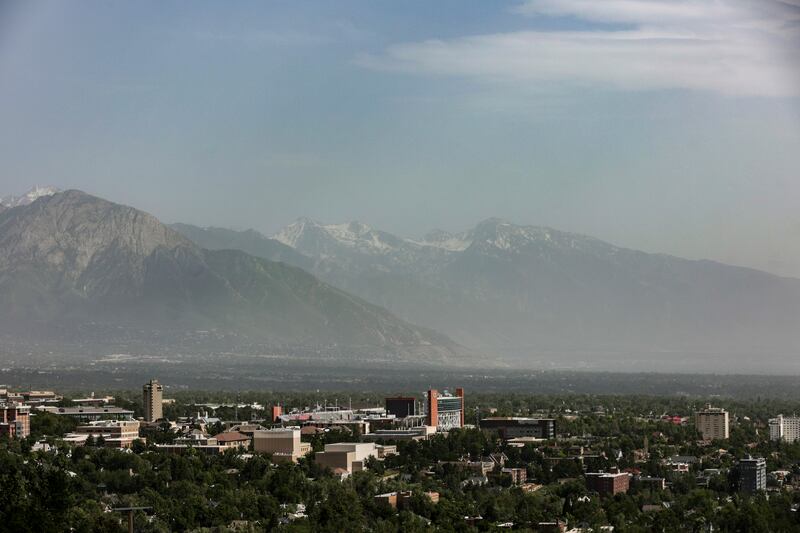A first-of-its-kind, research-grade pollution tracking tool has been unveiled for three cities across the country, including Salt Lake City.
The tool was developed by University of Utah professor John Lin in partnership with the Environmental Defense Fund and Carnegie Mellon University. It allows users to pick a particular location, day and time and trace backward where the air at that location was coming from.
“Air Tracker is designed to trace our potential source regions for pollution,” Lin said. “Users can make use of Air Tracker to investigate emission sources with a research-grade atmospheric model at their fingertips.”
How it benefits Salt Lake City: Users can see where the air — and air pollution — is coming from, enabling them to take steps to improve their air quality.
Lin said the tool, under development for a year, pulls together publicly available data from sources such as the Utah Division of Air Quality and monitoring devices university researchers are using that have been installed on Utah Transit Authority’s TRAX.
Linn said a real benefit of the tracking tool is that it also ropes in wind data so researchers can better understand the movement of pollution and its source.
While it does not track ozone — it’s very difficult to trace its formation — it zeros in on fine particulate pollution, called PM2.5, which has recently been an issue during the summer in Salt Lake City.
Wildfires and fireworks: Recently, as an example, the Air Tracker picked up PM2.5 pollution from the wildfire smoke caused by the Lake Shore and Lone fires along I-80 that interrupted travel on the interstate.
Summer wildfire pollution blanketed the Wasatch Front last year, shooting fine particulate pollution to levels described as the worst globally.
“It was a confirmation of what we expected,” said Lin, a professor of atmospheric science at the U.
Air pollution is complex and dynamic: Researchers are continually looking for more ways to understand its formation, movement and impacts. Utah has been at the forefront of groundbreaking studies to measure winter inversions and ozone formation in eastern Utah.
Researchers have been particularly concerned about the harmful effects of lake-blown dust affecting the Wasatch Front from Weber County to Utah and Juab counties. The dust from the exposed lake bed of the dwindling Great Salt Lake and the Dry Sevier Lake contain toxic metals.
The two other U.S. cities using Air Tracker are Houston and Pittsburgh.


